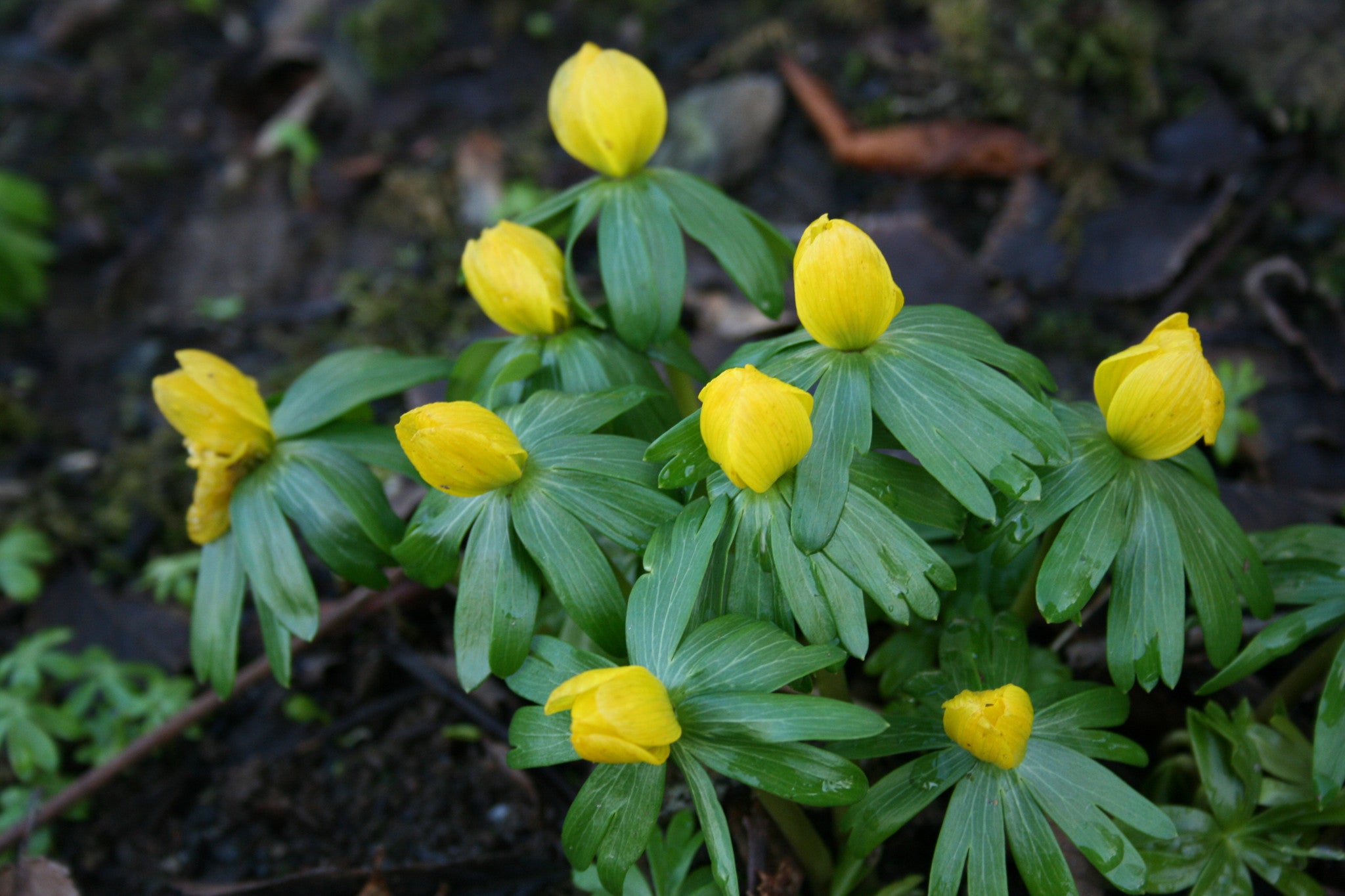Eranthis hyemalis Cilicica Group
Approx. 0.5 litre pot
About this cultivar:
Eranthis hyemalis Cilicica Group is synonymous with Eranthis cilicica. It is native to western and central Asia (Turkey to Afghanistan). In fact it gets its name from Cilicia, an early Roman province, located on what is today the southern (Mediterranean) coast of Turkey. It is very similar to the straight hyemalis species except it blooms slightly later and produces slightly larger yellow flowers on plants clad with more deeply dissected foliage which is sometimes tinged with bronze.
- Position: Full sun, partial shade
- Soil: Almost any soil, grows well in Ballyrobert
- Flowers: March, April
- Other features: Grows well in Ballyrobert, Dappled Shade or Full Shade Loving, Royal Horticultural Society Award of Garden Merit (RHS AGM), Woodland Plant
- Hardiness: Fully hardy - grows well in Ballyrobert!
- Habit: Clump forming
- Foliage: Deciduous
- Height: 10 - 25 cm (0.3 - 0.75 ft)
- Spread: 10 - 25 cm (0.3 - 0.75 ft)
- Time to full growth: 2 to 5 years
- Plant type: Herbaceous Perennial
- Colour: Green, yellow
- Goes well with: -
About this genus:
Eranthis (winter aconite) is a genus of eight species of flowering plants in the family Ranunculaceae (Buttercup family), native to southern Europe and east across Asia to Japan. The botanical name is greek for Spring (this) Flower (eran). The common name comes from the early flowering time and the resemblance of the leaves to those of the related genus Aconitum, the true aconite. Unlike Aconitum, Eranthis is not poisonous.
They are herbaceous perennials growing to 10–15 cm (4–6 in) tall. The flowers are yellow (white in E. albiflora and E. pinnatifida), and among the first to appear in spring, as early as January in mild climates, though later where winter snowpack persists; they are frost-tolerant and readily survive fresh snow cover unharmed. The leaves only expand fully when the flowers are nearly finished and only last for 2-3 months before dying down during the late spring.
Species in this genus are spring ephemerals, growing on forest floors and using the sunshine available below the canopy of deciduous trees before the leaves come out; the leaves die off when the shade from tree canopies becomes dense, or, in dry areas, when summer drought reduces water availability.
What does that mean for your garden? Well, it means they will pretty much grow anywhere in the British Isles. In fact they have naturalised all over.


